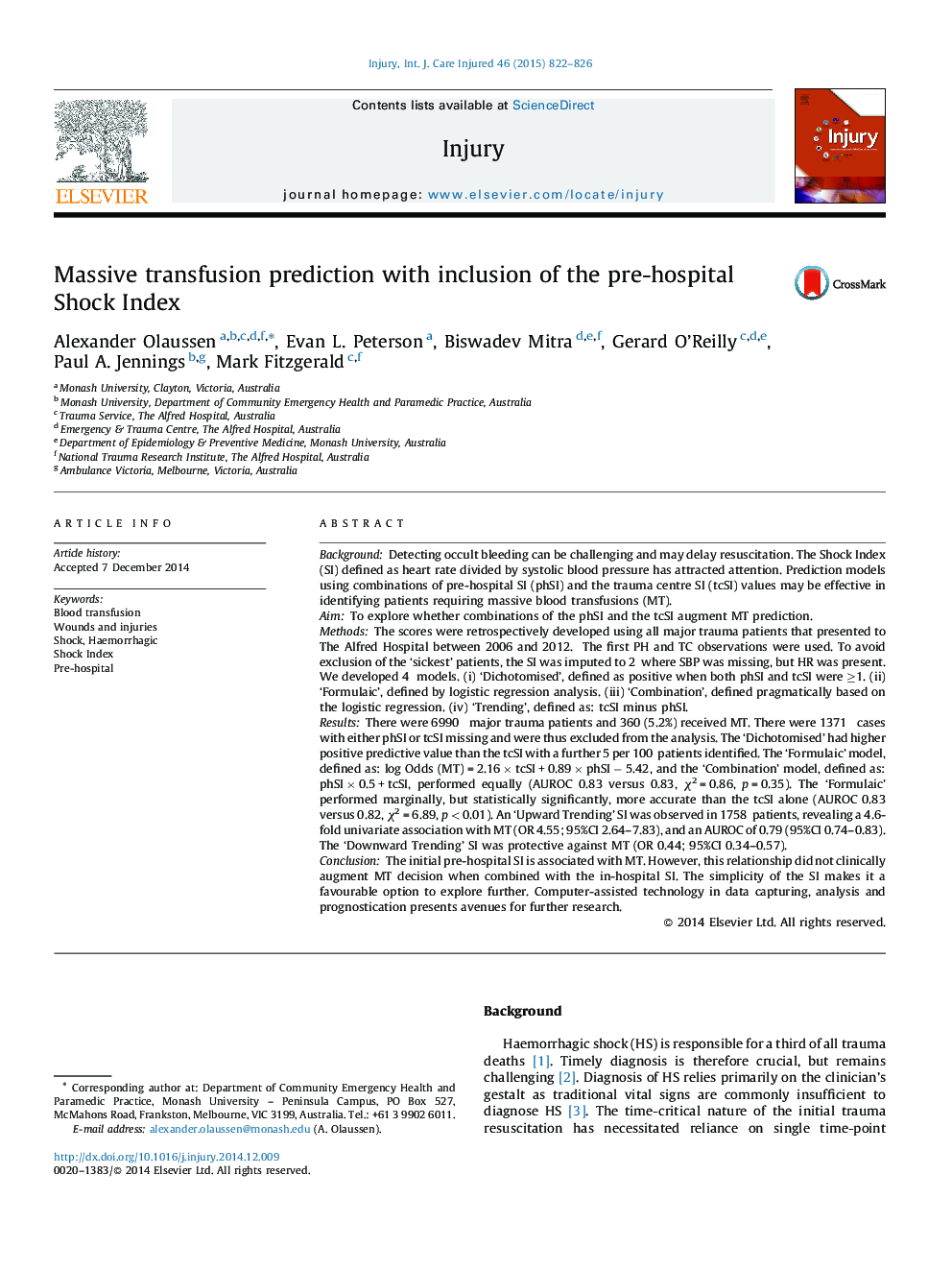| کد مقاله | کد نشریه | سال انتشار | مقاله انگلیسی | نسخه تمام متن |
|---|---|---|---|---|
| 3239322 | 1205997 | 2015 | 5 صفحه PDF | دانلود رایگان |
BackgroundDetecting occult bleeding can be challenging and may delay resuscitation. The Shock Index (SI) defined as heart rate divided by systolic blood pressure has attracted attention. Prediction models using combinations of pre-hospital SI (phSI) and the trauma centre SI (tcSI) values may be effective in identifying patients requiring massive blood transfusions (MT).AimTo explore whether combinations of the phSI and the tcSI augment MT prediction.MethodsThe scores were retrospectively developed using all major trauma patients that presented to The Alfred Hospital between 2006 and 2012. The first PH and TC observations were used. To avoid exclusion of the ‘sickest’ patients, the SI was imputed to 2 where SBP was missing, but HR was present. We developed 4 models. (i) ‘Dichotomised’, defined as positive when both phSI and tcSI were ≥1. (ii) ‘Formulaic’, defined by logistic regression analysis. (iii) ‘Combination’, defined pragmatically based on the logistic regression. (iv) ‘Trending’, defined as: tcSI minus phSI.ResultsThere were 6990 major trauma patients and 360 (5.2%) received MT. There were 1371 cases with either phSI or tcSI missing and were thus excluded from the analysis. The ‘Dichotomised’ had higher positive predictive value than the tcSI with a further 5 per 100 patients identified. The ‘Formulaic’ model, defined as: log Odds (MT) = 2.16 × tcSI + 0.89 × phSI − 5.42, and the ‘Combination’ model, defined as: phSI × 0.5 + tcSI, performed equally (AUROC 0.83 versus 0.83, χ2 = 0.86, p = 0.35). The ‘Formulaic’ performed marginally, but statistically significantly, more accurate than the tcSI alone (AUROC 0.83 versus 0.82, χ2 = 6.89, p < 0.01). An ‘Upward Trending’ SI was observed in 1758 patients, revealing a 4.6-fold univariate association with MT (OR 4.55; 95%CI 2.64–7.83), and an AUROC of 0.79 (95%CI 0.74–0.83). The ‘Downward Trending’ SI was protective against MT (OR 0.44; 95%CI 0.34–0.57).ConclusionThe initial pre-hospital SI is associated with MT. However, this relationship did not clinically augment MT decision when combined with the in-hospital SI. The simplicity of the SI makes it a favourable option to explore further. Computer-assisted technology in data capturing, analysis and prognostication presents avenues for further research.
Journal: Injury - Volume 46, Issue 5, May 2015, Pages 822–826
